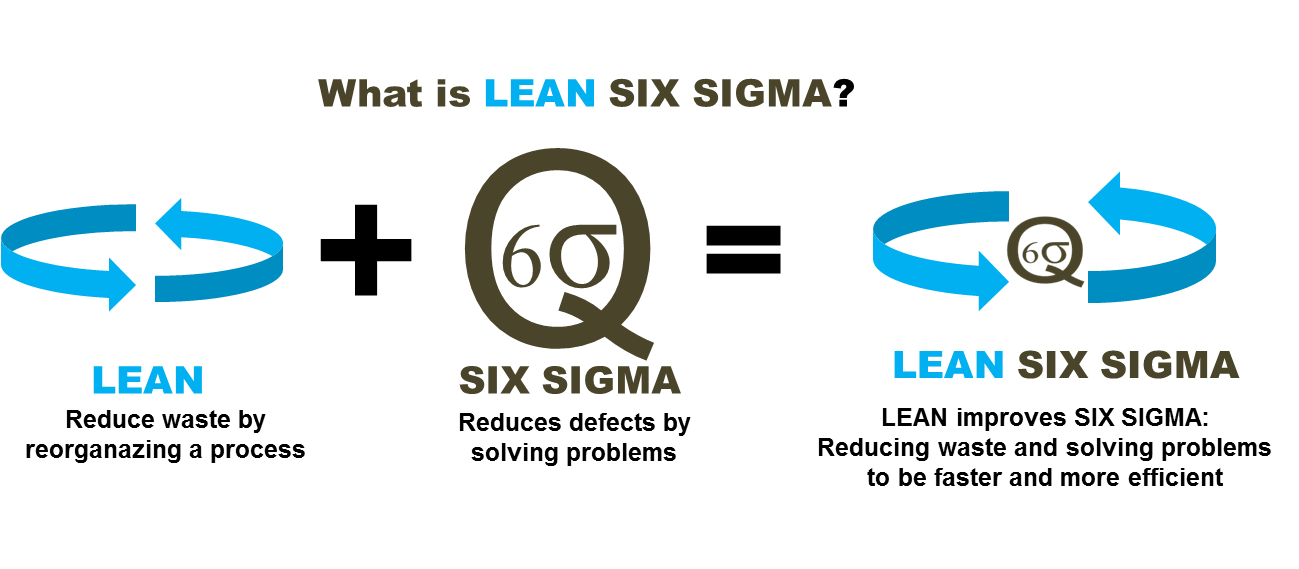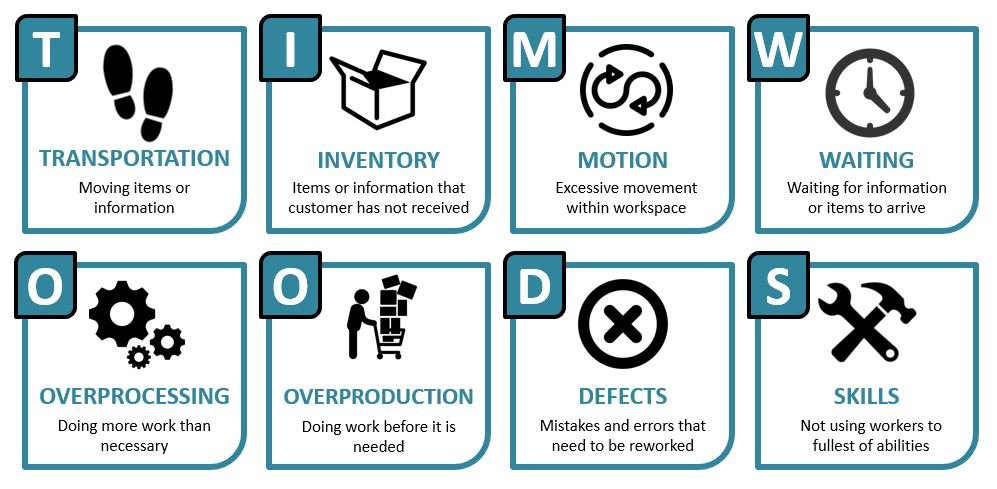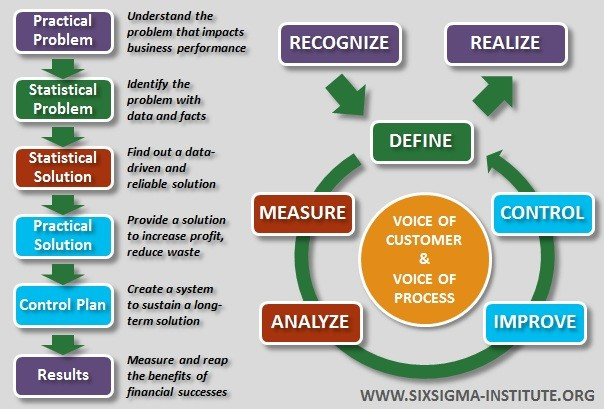Lean Six Sigma for Business Process Improvement: Driving Efficiency and Quality
Lean Six Sigma for Business Process Improvement: Driving Efficiency and Quality

In today’s competitive business landscape, organizations are constantly seeking ways to optimize their processes, reduce waste, and improve the quality of their products or services. One methodology that has gained significant popularity in recent years is Lean Six Sigma. This powerful approach combines the principles of Lean Manufacturing and Six Sigma to drive efficiency and quality throughout the entire business process.
What is Lean Six Sigma?
Lean Six Sigma is a data-driven methodology that aims to eliminate defects, minimize waste, and improve efficiency in business processes. It was originally developed by Motorola in the 1980s and later popularized by companies like Toyota and General Electric. The methodology combines the Lean principles of waste reduction and value stream mapping with the statistical tools and techniques of Six Sigma.
The Lean Principles
The Lean principles focus on identifying and eliminating waste in all its forms. Waste, also known as “Muda” in Japanese, refers to any activity that does not add value to the customer. There are eight types of waste commonly identified in Lean:

- Transportation: Unnecessary movement of materials or information.
- Inventory: Excess inventory that ties up capital and increases lead time.
- Motion: Unnecessary movement of people or equipment.
- Waiting: Idle time caused by delays or bottlenecks in the process.
- Overproduction: Producing more than what is needed, leading to excess inventory.
- Overprocessing: Performing unnecessary steps or using excessive resources.
- Defects: Errors or mistakes that require rework or correction.
- Skills: Underutilization of employee skills and knowledge.
By identifying and eliminating these forms of waste, organizations can streamline their processes, reduce costs, and improve overall efficiency.
The Six Sigma Methodology
Six Sigma is a statistical approach that aims to reduce process variation and defects to achieve near-perfect quality. It focuses on measuring and analyzing data to identify the root causes of problems and implement effective solutions. The term “Six Sigma” refers to a statistical measure of process performance, where a process operating at Six Sigma level produces only 3.4 defects per million opportunities.
The Six Sigma methodology follows a structured problem-solving approach known as DMAIC:
- Define: Clearly define the problem, project goals, and customer requirements.
- Measure: Collect data and measure the current process performance.
- Analyze: Analyze the data to identify the root causes of defects or inefficiencies.
- Improve: Implement solutions to address the root causes and improve process performance.
- Control: Establish control measures to sustain the improvements and monitor ongoing performance.
By combining the Lean principles with the Six Sigma methodology, Lean Six Sigma provides a comprehensive framework for continuous improvement and waste reduction.
Applying Lean Six Sigma to Business Process Improvement
Lean Six Sigma can be applied to any business process, regardless of the industry or sector. Its goal is to identify and eliminate waste, reduce process variation, and enhance product quality. Here are some key steps involved in applying Lean Six Sigma to business process improvement:

-
Identify the Process: Start by identifying the specific process that needs improvement. This could be a manufacturing process, a service delivery process, or even an administrative process.
-
Map the Value Stream: Use value stream mapping techniques to visualize the entire process flow, from start to finish. This helps identify areas of waste and inefficiency.
-
Collect Data: Gather data on process performance, including cycle time, defect rates, customer complaints, and other relevant metrics. This data will serve as a baseline for measuring improvement.
-
Analyze the Data: Use statistical tools and techniques to analyze the data and identify the root causes of waste, defects, or inefficiencies. This may involve techniques such as Pareto analysis, root cause analysis, and hypothesis testing.
-
Implement Solutions: Based on the analysis, develop and implement solutions to address the identified root causes. This may involve process redesign, automation, training, or other improvement initiatives.
-
Monitor and Control: Establish control measures to monitor the effectiveness of the implemented solutions and ensure ongoing process performance. This may involve the use of statistical process control charts, regular audits, and performance tracking.
By following these steps, organizations can drive efficiency, reduce waste, and improve the quality of their products or services. Lean Six Sigma provides a structured and data-driven approach to continuous improvement.
Benefits of Lean Six Sigma for Business Process Improvement
Implementing Lean Six Sigma principles in business process improvement can yield numerous benefits for organizations. Some of the key benefits include:
-
Improved Efficiency: By eliminating waste and streamlining processes, organizations can significantly improve their efficiency. This leads to reduced lead times, increased productivity, and lower operating costs.
-
Enhanced Quality: Lean Six Sigma focuses on reducing defects and process variationthrough statistical analysis and root cause identification. By improving quality, organizations can enhance customer satisfaction and loyalty.
-
Cost Reduction: The reduction of waste and defects directly translates into cost savings. By eliminating unnecessary steps, excess inventory, and rework, organizations can reduce their operational costs and improve their bottom line.
-
Increased Customer Satisfaction: Lean Six Sigma aims to meet and exceed customer expectations by delivering high-quality products or services consistently. This leads to increased customer satisfaction, positive word-of-mouth, and repeat business.
-
Employee Engagement: Lean Six Sigma encourages employee involvement and empowerment. By involving employees in process improvement initiatives, organizations can tap into their knowledge and expertise, leading to increased engagement and motivation.
-
Competitive Advantage: Implementing Lean Six Sigma principles gives organizations a competitive edge in the market. By continuously improving processes and delivering high-quality products or services, organizations can differentiate themselves from competitors and attract more customers.
Frequently Asked Questions (FAQ)
1. What industries can benefit from Lean Six Sigma?
Lean Six Sigma principles can be applied to a wide range of industries, including manufacturing, healthcare, finance, logistics, and service-based industries. Any organization that has processes can benefit from Lean Six Sigma.
2. How long does it take to see results from Lean Six Sigma implementation?
The timeline for seeing results from Lean Six Sigma implementation varies depending on the complexity of the process and the level of improvement required. However, organizations typically start seeing measurable improvements within a few months of implementation.
3. Can Lean Six Sigma be combined with other process improvement methodologies?
Yes, Lean Six Sigma can be combined with other process improvement methodologies such as Agile, Kaizen, and Total Quality Management (TQM). The combination of different methodologies allows organizations to leverage the strengths of each approach and achieve even greater results.
4. Is Lean Six Sigma only for large organizations?
No, Lean Six Sigma can be implemented in organizations of all sizes. Whether it’s a small startup or a large multinational corporation, the principles of Lean Six Sigma can be tailored to fit the specific needs and resources of the organization.
5. How can I get started with Lean Six Sigma?
To get started with Lean Six Sigma, it is recommended to undergo training and certification programs. These programs provide a comprehensive understanding of Lean Six Sigma principles, tools, and techniques. Additionally, organizations can hire Lean Six Sigma consultants or experts to guide them through the implementation process.
Conclusion
Lean Six Sigma is a powerful methodology that enables organizations to drive efficiency and quality in their business processes. By combining the principles of Lean Manufacturing and Six Sigma, organizations can identify and eliminate waste, reduce process variation, and enhance product quality. The benefits of Lean Six Sigma include improved efficiency, enhanced quality, cost reduction, increased customer satisfaction, employee engagement, and a competitive advantage. Whether it’s a manufacturing process, a service delivery process, or an administrative process, Lean Six Sigma can be applied to any industry or sector. By implementing Lean Six Sigma principles, organizations can achieve continuous improvement and stay ahead in today’s competitive business landscape. So why wait? Start your Lean Six Sigma journey today and unlock the full potential of your business processes.
Read more our Business Architecture related articles on Blog
Find more about our conprehensive Enterprise Architecture Guide